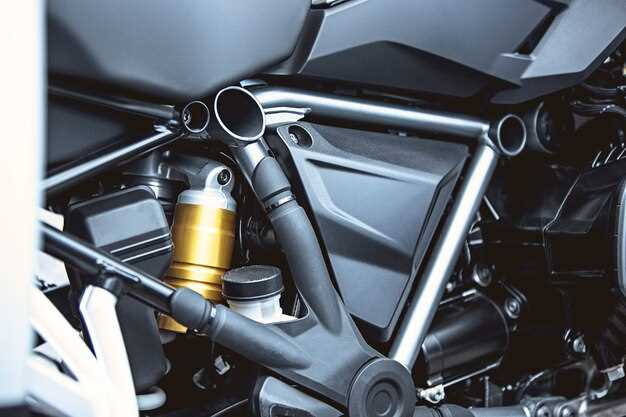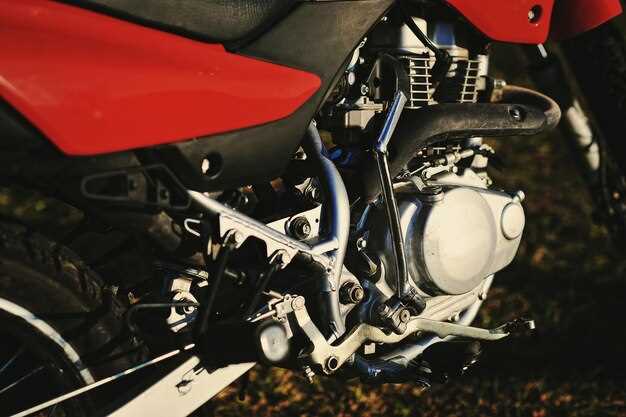

When it comes to enhancing the performance and aesthetics of your motorcycle, upgrading the exhaust system is one of the most effective modifications you can make. An aftermarket exhaust system not only improves the engine’s efficiency but also offers a distinctive sound that can turn heads on the road. With a plethora of options available on the market, choosing the right exhaust system can be a daunting task for both novice and experienced riders.
This article delves into the best aftermarket exhaust systems currently available for motorcycles, focusing on performance gains, sound quality, and overall build quality. Whether you’re looking to increase horsepower, reduce weight, or simply achieve that iconic motorcycle roar, understanding the features and benefits of different exhaust systems is crucial.
Furthermore, we will discuss the important factors to consider when selecting an aftermarket exhaust for your motorcycle, including compatibility, materials used, and installation complexity. Let’s explore the top contenders that not only deliver undeniable performance improvements but also enhance your bike’s visual appeal, ensuring you make an informed decision that aligns with your riding style and preferences.
Choosing the Right Material for Your Motorcycle Exhaust

When selecting an aftermarket exhaust system for your motorcycle, the material used plays a crucial role in performance, durability, and aesthetics. The most common materials for motorcycle exhausts include stainless steel, titanium, and aluminum, each offering distinct advantages and drawbacks.
Stainless steel is renowned for its resistance to corrosion and longevity. It provides a good balance between durability and weight, making it a popular choice among riders. High-quality stainless steel exhausts can withstand extreme temperatures and harsh environmental conditions, ensuring a long lifespan. However, they may be heavier than other materials, which can impact performance.
Titanium is lighter than stainless steel and provides excellent strength and heat resistance. Many performance enthusiasts prefer titanium exhaust systems due to their ability to reduce overall bike weight, which can enhance acceleration and handling. However, titanium can be more expensive than stainless steel and may require careful maintenance to prevent discoloration over time.
Aluminum is another viable option, often chosen for its affordability and lightweight characteristics. While aluminum exhausts can provide good performance benefits, they are generally less durable than stainless steel or titanium. They may be prone to corrosion and dents, making them less suitable for riders frequently exposed to harsh conditions.
Another factor to consider is the manufacturing process. Some exhausts are made using mandrel bending, which ensures a smooth flow of exhaust gases, reducing back pressure and improving engine performance. It’s essential to check the construction quality of any exhaust system to ensure it meets your performance needs.
Ultimately, the choice of material for your motorcycle exhaust system should align with your riding style, environmental exposure, and budget. Balancing these factors will help you select the most suitable exhaust that enhances both performance and longevity. A well-chosen exhaust can significantly improve your motorcycle’s aesthetics and sound, creating a more enjoyable ride.
Top Brands and Their Unique Features Explained
When it comes to aftermarket exhaust systems for motorcycles, several brands stand out due to their innovation, performance, and unique features. Here are some of the top brands that enthusiasts trust:
Akrapovič: Known for its premium quality and high-performance exhaust systems, Akrapovič utilizes aerospace-grade materials like titanium and carbon fiber. Their unique design not only enhances performance but also significantly reduces weight. The brand’s exhaust systems are engineered to improve the bike’s aerodynamics, resulting in a more aggressive sound and increased horsepower.
VANCE & HINES: This brand specializes in exhaust systems for cruisers and touring bikes. Vance & Hines is recognized for producing deep, throaty sounds that appeal to traditional motorcycle enthusiasts. Their systems often feature removable baffles, allowing riders to customize sound levels. Many of their products also come with a race-inspired design that enhances both aesthetics and performance.
Two Brothers Racing: Two Brothers Racing offers a variety of exhaust systems tailored for performance and style. Their products are characterized by an attractive design and loud, throaty exhaust notes. They incorporate a patented “V.A.L.E.” system, allowing for easy installation and removal, which is particularly beneficial for those who participate in track days.
Yoshimura: Known for their involvement in motocross and racing, Yoshimura’s exhaust systems are engineered for high performance on the track. Their exhausts feature a unique Tri-Oval design that not only looks sleek but also optimizes exhaust flow. Additionally, Yoshimura offers a range of muffler options that enhance the overall sound profile, providing a blend of performance and unmistakable style.
FMF Racing: Predominantly focused on dirt bikes and off-road motorcycles, FMF Racing stands out with its innovative technology and materials. Their exhaust systems utilize a composite construction that reduces weight while improving durability. FMF’s signature sound is also a key selling point, offering a distinct tone that riders love.
Each of these brands not only enhances motorcycle performance but also represents a commitment to innovation and rider satisfaction. Choosing the right exhaust system involves considering individual performance goals, sound preferences, and compatibility with specific bike models.
Installation Process and Considerations for Aftermarket Exhausts

Installing an aftermarket exhaust system can significantly enhance the performance and sound of your motorcycle. However, the installation process requires careful attention to detail and proper tools. Begin by gathering necessary tools, which typically include wrenches, sockets, screwdrivers, a torque wrench, and anti-seize compound. It is also advisable to have a motorcycle lift or stand to ensure safety and ease during installation.
First, ensure that the motorcycle is cool to the touch to avoid burns. Start by removing the stock exhaust system. This usually involves loosening the clamps and bolts holding the exhaust in place. Carefully detach the exhaust pipes and silencers, taking care not to damage any surrounding components. Follow the manufacturer’s instructions for your specific make and model to avoid complications.
Once the stock system is removed, clean the mounting surfaces to ensure a proper fit for the new exhaust. Before installing the aftermarket exhaust, apply anti-seize compound to the bolts to prevent them from seizing over time. Align the new exhaust system in its designated position, ensuring all mounting points match up with the bike’s frame and hardware.
Securely fasten the exhaust system using the provided hardware. Follow the recommended torque specifications to ensure that bolts are tightened adequately without risking damage to the components. It’s crucial to check for leaks after installation; this can be done by starting the motorcycle and examining the joints for any signs of exhaust gases escaping.
Another consideration is the potential need for re-tuning the motorcycle’s engine management system. Aftermarket exhausts often change the flow dynamics, requiring adjustments to fuel maps or air intake systems to achieve optimal performance. Some riders opt for a fuel management system or a re-flash of the ECU to maximize the benefits of the new exhaust.
Finally, reviewing local noise regulations is essential before finalizing the installation. Aftermarket exhaust systems can significantly increase sound levels, which may not comply with local laws. Ensure that your new system meets the regulatory standards to avoid potential fines or complications when riding.






